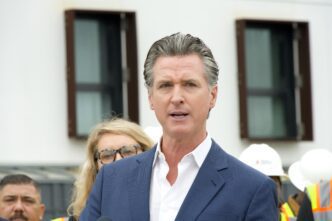Thrift stores in the Twin Cities are experiencing a notable increase in business, attributed in part to economic factors such as tariffs on imported goods. Many secondhand stores in the area, including Legacy Thrift in Crystal, have reported significant boosts in sales, with some reaching up to $10,000 a day. The economic climate, influenced by President Donald Trump’s tariff policies, has heightened consumer anxiety and increased prices for items like imported clothing. This has prompted shoppers to seek more cost-effective options, leading to a surge in secondhand purchases.
Store managers across the Twin Cities note an uptick in foot traffic, with a diverse clientele ranging from middle-class bargain hunters to families seeking affordable necessities. The increase in demand for secondhand goods is partly driven by the rising costs from tariffs and the broader economic uncertainty. While some retail sectors have raised prices, many thrift stores have managed to keep their offerings affordable, maintaining a steady appeal to budget-conscious consumers.
The Thrift Flip
How Tariffs and Economic Uncertainty are Fueling a Secondhand Boom in the Twin Cities
Some Twin Cities thrift stores report daily sales reaching…
$10,000
This surge reflects a significant shift in consumer behavior towards more cost-effective shopping options.
The Cause & Effect Chain
Tariffs on Imported Goods
(e.g., clothing, housewares)
Higher Prices & Consumer Anxiety
Shoppers feel the squeeze on their budgets.
Search for Affordable Alternatives
Consumers actively seek out ways to save money.
BOOM in Thrift Store Sales
Secondhand market becomes a primary destination.
Who’s Shopping Secondhand?
Illustrative Growth in Foot Traffic
A Diverse Clientele
👨👩👧👦
Families
Seeking affordable necessities and clothing for growing kids.
🕵️♀️
Bargain Hunters
Middle-class shoppers looking for quality items without the retail markup.
♻️
Eco-Conscious
Consumers who prioritize sustainability and reducing waste.
Industry experts caution that while the trend is beneficial for thrift stores, it may also lead to increased operational costs, which could eventually affect pricing. Historical patterns show that during economic downturns, consumers often turn to secondhand markets, a phenomenon that thrived during the 2008 recession and was observed again during the pandemic.
As consumers adapt to the current financial landscape, thrift stores are not only serving as a practical option but also providing a stable shopping environment amid economic volatility. With the ongoing uncertainty around tariff policies, the secondhand market in the Twin Cities might continue to see growth, reflecting broader shifts in consumer behavior toward more sustainable and financially prudent shopping practices.
A Shifting Retail Landscape: How Tariffs Are Reshaping U.S. Consumer Habits
The reported boom in thrift store sales across the Twin Cities offers a compelling snapshot of how American consumers are adapting to current economic pressures, particularly those stemming from tariff policies. This localized surge in secondhand purchases, driven by anxieties over rising prices for imported goods, is not an isolated incident but rather a clear indicator of broader national trends. As tariffs elevate the cost of new clothing, electronics, and other consumer items, households nationwide are increasingly seeking more cost-effective alternatives. This trend highlights a fundamental shift in purchasing behavior, where affordability and value take precedence, compelling a diverse range of shoppers – from budget-conscious families to middle-class bargain hunters – to explore avenues beyond traditional retail.
This pivot towards secondhand markets carries significant implications for the broader U.S. retail sector. While thrift stores benefit from increased foot traffic and sales, it signals a challenging environment for conventional retailers reliant on imported inventories, who are either absorbing higher tariff costs or passing them directly onto consumers. The historical precedent of consumers turning to secondhand markets during economic downturns, seen vividly during the 2008 recession and the recent pandemic, underscores the current phenomenon as a national coping mechanism. While the immediate beneficiaries are thrift stores, even they are not immune to the rising operational costs that could eventually threaten their crucial role in providing affordable goods, hinting at the pervasive nature of tariff-induced economic strain across the supply chain.
Ultimately, the burgeoning secondhand market reflects a pragmatic response from American households to persistent economic volatility and the direct impact of tariff policies on everyday expenses. This trend underscores a deeper consumer resilience and adaptability, as shoppers actively seek out financially prudent practices. As long as uncertainties surrounding tariff policies persist and prices for new goods remain elevated, the growth of the secondhand market is likely to continue across the United States, serving as a powerful indicator of how trade policies directly influence household budgets and reshape the very fabric of American retail.








